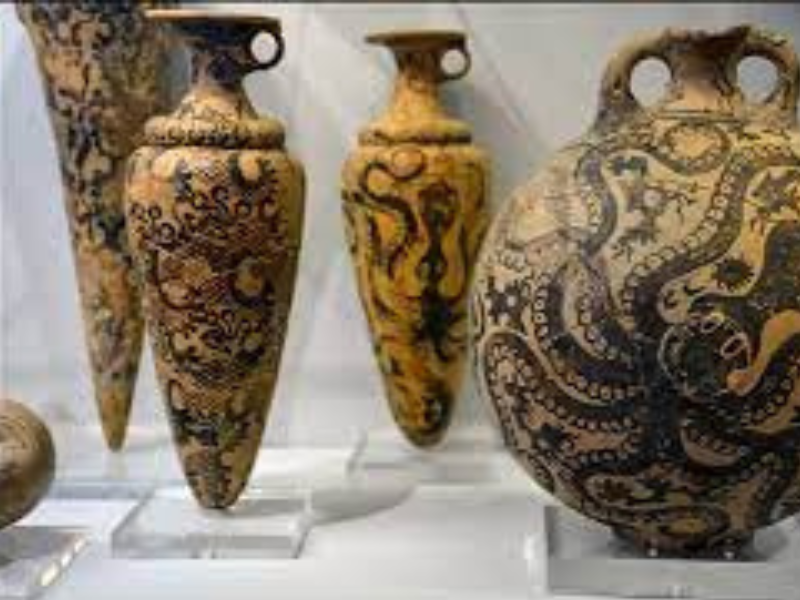Table of Contents
Introduction:
In the ancient Mediterranean, the Minoan civilization emerged as a beacon of cultural exchange, facilitated by their expansive maritime trade. From their strategic position on the island of Crete, the Minoans navigated the seas, connecting distant lands and cultures.
This seafaring prowess allowed not just for the exchange of goods, but also for a rich intermingling of ideas, art, and beliefs, weaving a diverse cultural landscape across the Mediterranean.
Minoan Trade and Its Reach:
The reach of Minoan maritime trade was vast, stretching from the shores of Crete to the bustling markets of Egypt, the vibrant cities of the Levant, and beyond. Their ships, laden with goods like olive oil, wine, and the renowned Kamares pottery, touched the ports of various civilizations.
This extensive network of trade routes served as arteries of cultural exchange, allowing for the flow of not only commodities but also of artistic styles and religious concepts.
Cultural Influences on Minoan Society:
The Minoans were not just passive participants in this exchange. The influx of foreign goods and ideas profoundly influenced Minoan society. Artifacts excavated from Minoan sites reveal a fusion of artistic styles – from Egyptian motifs to Mesopotamian techniques.
This blend of influences is evident in Minoan frescoes, pottery, and religious iconography, showcasing a civilization enriched by its interactions with the world.

The Minoans as Cultural Ambassadors:
In their travels, the Minoans also disseminated their own culture. Their art, characterized by naturalistic and vibrant images, found its way into the homes and hearts of people across the Mediterranean.
The religious symbols and practices of the Minoans, including the worship of the Mother Goddess, left imprints in the religious practices of other cultures, highlighting the Minoans’ role as cultural ambassadors.
Intercultural Exchanges in Minoan Ports:
The ports of Minoan Crete were vibrant melting pots of cultures, where traders, artisans, and envoys from various lands converged. These bustling harbors, such as those in Knossos and Phaistos, witnessed a continuous flow of foreign traders and visitors.
Archaeological evidence, including diverse styles of pottery and artifacts found in Minoan sites, testifies to the presence of Egyptians, Phoenicians, and others. These interactions in Minoan ports were not merely transactional; they were crucibles of cultural fusion, where ideas, artistic styles, and religious practices were exchanged and adapted.
Legacy of Minoan Cultural Exchange:
The legacy of the Minoans in the realm of cultural exchange extends far beyond their era. They were among the pioneers of what could be considered early globalization, fostering connections that bridged diverse cultures.
The artistic and religious influences of the Minoans rippled across the Mediterranean, impacting subsequent civilizations. Their role in shaping the cultural tapestry of the ancient world is a testament to the power of maritime trade in transcending geographical boundaries and fostering a shared human heritage.
Conclusion:
Through their expansive maritime trade network, the Minoans cultivated a legacy of cultural exchange that resonates through time. They showcased how trade can be a powerful vector for cultural interaction, enriching societies by broadening horizons and fostering mutual understanding.
The story of Minoan trade is not just one of commodities exchanged but of cultures intertwined, painting a vivid picture of the interconnectedness of the ancient world.


